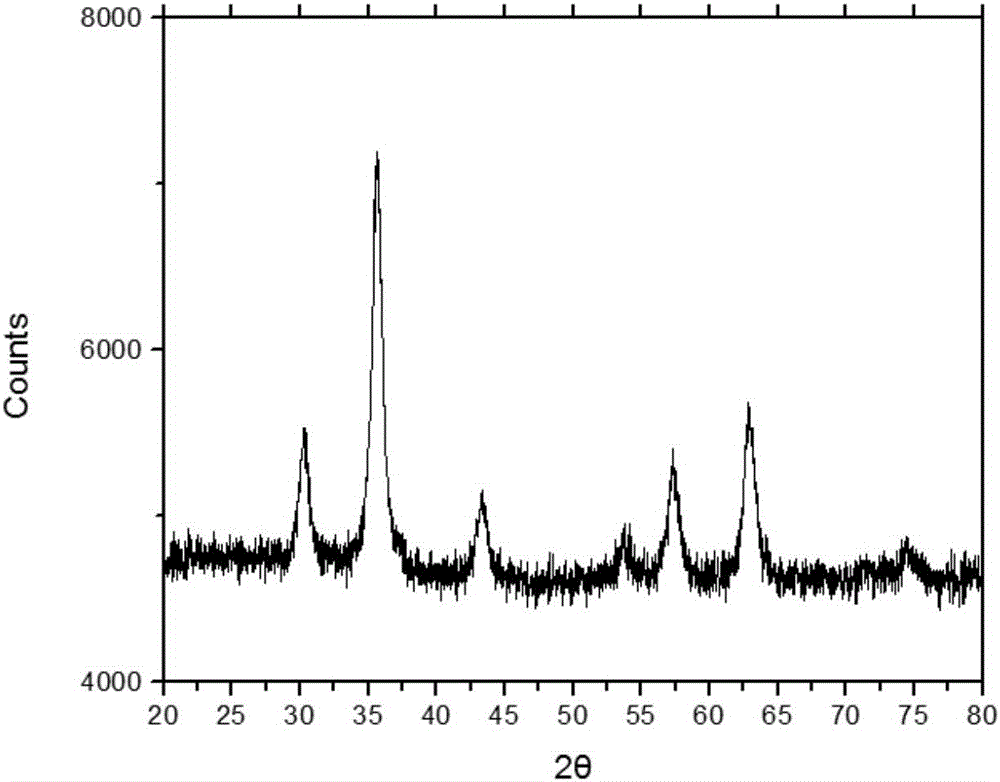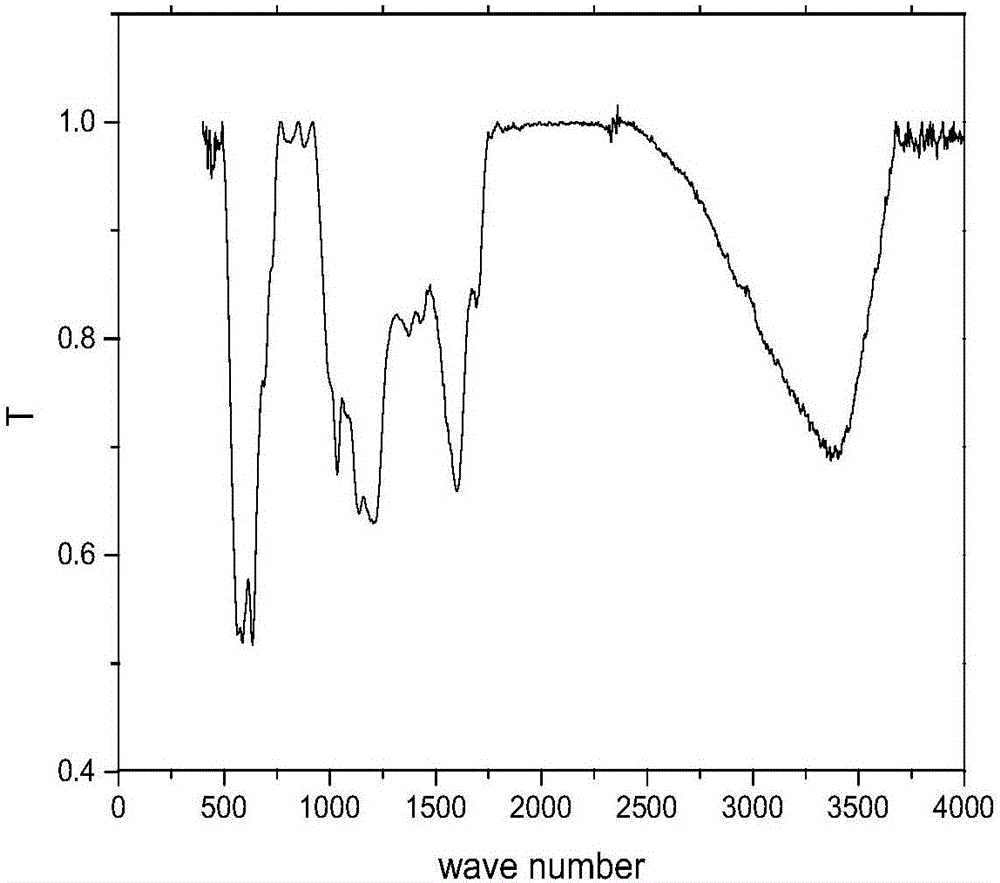Magnetic carbon-based solid acid catalyst with core-shell structure and preparation method of magnetic carbon-based solid acid catalyst, as well as application in lignocelluloses saccharification process
A carbon-based solid acid, lignocellulose technology, applied in chemical instruments and methods, chemical/physical processes, physical/chemical process catalysts, etc. The effect of repeated use, avoiding oversized magnetic particles, and simple follow-up processing
- Summary
- Abstract
- Description
- Claims
- Application Information
AI Technical Summary
Problems solved by technology
Method used
Image
Examples
preparation example Construction
[0039] The preparation method of a core-shell structure magnetic carbon-based solid acid catalyst proposed in this application includes the following steps:
[0040] (1) Magnetic powder Fe 3 O 4 Preparation: the molar ratio of Fe 3+ And Fe 2+ Dissolve the two salts in distilled water to mix the solution evenly. Place it in a constant temperature water bath at 65°C. While stirring rapidly, add NaOH solution dropwise to the mixed solution, adjust the pH of the solution to 10-12; continue stirring and add no Water ethanol, the volume ratio of the absolute ethanol to the mixed solution is 1:5, stand still, black particles are observed, that is Fe 3 O 4 Magnetic particles, will contain Fe 3 O 4 Raise the mixed solution of magnetic particles to 80℃, add buffering agent to adjust the pH value of the mixed solution to 4-6, add anionic surfactants while stirring, after standing still, use external magnet to adsorb and precipitate, and the precipitate is washed and dried Magnetic powder Fe ...
Embodiment 1
[0044] 1) Magnetic powder Fe 3 O 4 Preparation: The molar ratio of Fe 3+ And Fe 2+ Dissolve the two salts in a certain amount of distilled water to make the solution evenly mixed. Place it in a constant temperature water bath at 65°C. While stirring rapidly, add NaOH solution (2mol / L) dropwise to the mixed solution to adjust the pH of the solution to 10-12; Continue to stir and add absolute ethanol. The volume ratio of absolute ethanol to the mixed solution is 1:5. After standing for 10 minutes, black particles can be observed, that is, magnetic particles;
[0045] Then, raise the temperature to 80℃, add buffer glacial acetic acid to adjust the mixed solution to pH=4~6, glacial acetic acid and Fe 2+ The molar ratio is 0.4:1. While stirring, add the anionic surfactant oleic acid, oleic acid and Fe 2+ The molar ratio is 0.4:1. After standing for 30 minutes, the precipitate is adsorbed by an external magnet. The precipitate is washed with anhydrous ethanol and deionized water several ...
Embodiment 2
[0056] The molar ratio of Fe 3+ And Fe 2+ Dissolve the two salts in a certain amount of distilled water to make the solution evenly mixed. Place it in a constant temperature water bath at 65°C. While stirring rapidly, add NaOH solution (2mol / L) dropwise to the mixed solution to adjust the pH of the solution to 10-12; Continue to stir and add absolute ethanol. The volume ratio of absolute ethanol to the mixed solution is 1:5. Let it stand for 10 minutes. Black particles can be observed, that is, magnetic particles;
[0057] Then, increase the temperature to 80°C, add buffer sodium acetate to adjust the mixed solution to pH=4~6, sodium acetate and Fe 2+ The molar ratio is 0.5:1. While stirring, add the anionic surfactant sodium oleate, sodium oleate and Fe 2+ The molar ratio is 0.5:1. After standing for 30 minutes, the precipitate is adsorbed by an external magnet. The precipitate is washed with anhydrous ethanol and deionized water several times, dried and calcined to obtain Fe 3 O ...
PUM
| Property | Measurement | Unit |
|---|---|---|
| specific surface area | aaaaa | aaaaa |
| quality score | aaaaa | aaaaa |
Abstract
Description
Claims
Application Information
 Login to View More
Login to View More - R&D
- Intellectual Property
- Life Sciences
- Materials
- Tech Scout
- Unparalleled Data Quality
- Higher Quality Content
- 60% Fewer Hallucinations
Browse by: Latest US Patents, China's latest patents, Technical Efficacy Thesaurus, Application Domain, Technology Topic, Popular Technical Reports.
© 2025 PatSnap. All rights reserved.Legal|Privacy policy|Modern Slavery Act Transparency Statement|Sitemap|About US| Contact US: help@patsnap.com


